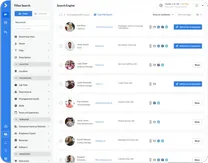
The B2B lead generation market has exploded to $11.23 billion in 2025 and is projected to reach $29.51 billion by 2034, growing at 11.33% CAGR. With 85% of B2B marketers prioritizing lead generation and 53% spending over half their budget on it, the right tools are no longer optional—they’re essential.
Key Takeaways:
- Multi-channel campaigns cost 31% less per lead than single-channel approaches
- 61% of B2B marketers say quality leads are their biggest challenge
- AI-powered tools can increase lead generation by 50% and conversion rates by 47%
- The average B2B lead costs $200 but varies dramatically by industry
This guide covers the top 15 b2b lead generation tools spanning free and paid options, from prospecting platforms to email automation and CRM integrations—everything you need to build a winning lead generation strategy in 2025.
The State of B2B Lead Generation in 2025
B2B lead generation has fundamentally transformed. What worked even two years ago feels outdated in today’s hyper-competitive landscape. The numbers tell the story: multi-channel lead generation campaigns achieve a 31% lower average cost per lead than single-channel outreach, yet 45% of businesses reported struggling to generate enough leads in the last year.
The global lead generation market is predicted to reach US $15.55 billion in 2031, with 74% of marketers confirming that content marketing has proven effective in lead generation. But here’s the challenge: 61% of B2B marketers say that quality leads are the biggest challenge, not quantity.
The shift is clear – quality over quantity defines successful b2b lead generation strategies in 2025. Companies are moving away from spray-and-pray tactics toward precision targeting, account-based marketing, and AI-powered personalization.
Why B2B Lead Generation Tools Matter More Than Ever
Think of modern b2b lead generation software as your competitive advantage multiplier. Companies that use AI report up to a 50% increase in lead generation and 47% higher conversion rates. These tools don’t just find leads—they qualify them, nurture them, and guide them through increasingly complex B2B buying processes.
The stakes are higher too. B2B technology has one of the lowest lead conversion rates at 1.7%, highlighting the intense competition and long sales cycles in high-consideration B2B tech purchases. Every lead matter, and every tool in your stack needs to earn its place.
How We Selected the Best B2B Lead Generation Tools
Our selection process focused on tools that deliver measurable results across five key criteria:
- Data Accuracy & Coverage: Real-time verification, comprehensive B2B databases, and GDPR/CCPA compliance
- Integration Capabilities: Seamless CRM connections and workflow automation
- User Experience: Intuitive interfaces that don’t require extensive training
- ROI Potential: Clear pricing models with demonstrable lead quality improvements
- Scalability: Tools that grow with your business from startup to enterprise
We prioritized tools that address the biggest pain points: lead qualification, multi-channel outreach, and proving marketing ROI.
The 15 Best B2B Lead Generation Tools for 2025
1. Swordfish.ai – Contact Finding & Enrichment Platform

Best For: Teams needing accurate personal emails, cell phones, and direct dials
Swordfish.ai stands out in the crowded contact-finding space with its focus on both business and personal contact data. With over 200 live data partners and real-time verification, it’s become essential for recruiters, sales teams, and investigators who need reliable contact information.
Key Features of This lead gen software:
- Real-time email and phone validation
- 200+ live data partners for comprehensive coverage
- Chrome extension, file upload, and API access
- Reverse lookup capabilities
- GDPR and CCPA compliant
Pricing:
- Free trial: 10 credits
- Unlimited Solo: $99/month (most popular)
- Unlimited Teams: $299-$599/month based on team size

Why It Made Our List: Swordfish.ai delivers what most contact tools struggle with accurate personal contact data with real-time verification. For B2B teams targeting hard-to-reach decision makers, this accuracy difference is game-changing.
2. HubSpot – One of the Best B2B Lead Generation Tool for 2025

Best For: Companies wanting integrated marketing, sales, and CRM functionality
HubSpot is a popular tool for B2B lead generation and CRM, offering automation features for businesses of all sizes. HubSpot revolutionized inbound marketing and remains the gold standard for businesses building comprehensive lead generation engines. Its free CRM combined with powerful marketing automation makes it accessible for startups while scaling to enterprise needs.
Key Features of lead generation software:
- Comprehensive CRM with unlimited free contacts
- Email marketing automation and sequences
- Landing page and form builders
- Social media management and monitoring
- Advanced analytics and attribution reporting
Pricing:
- Free: Basic CRM and marketing tools
- Starter: $45/month for 1,000 contacts
- Professional: $1,600/month for advanced features
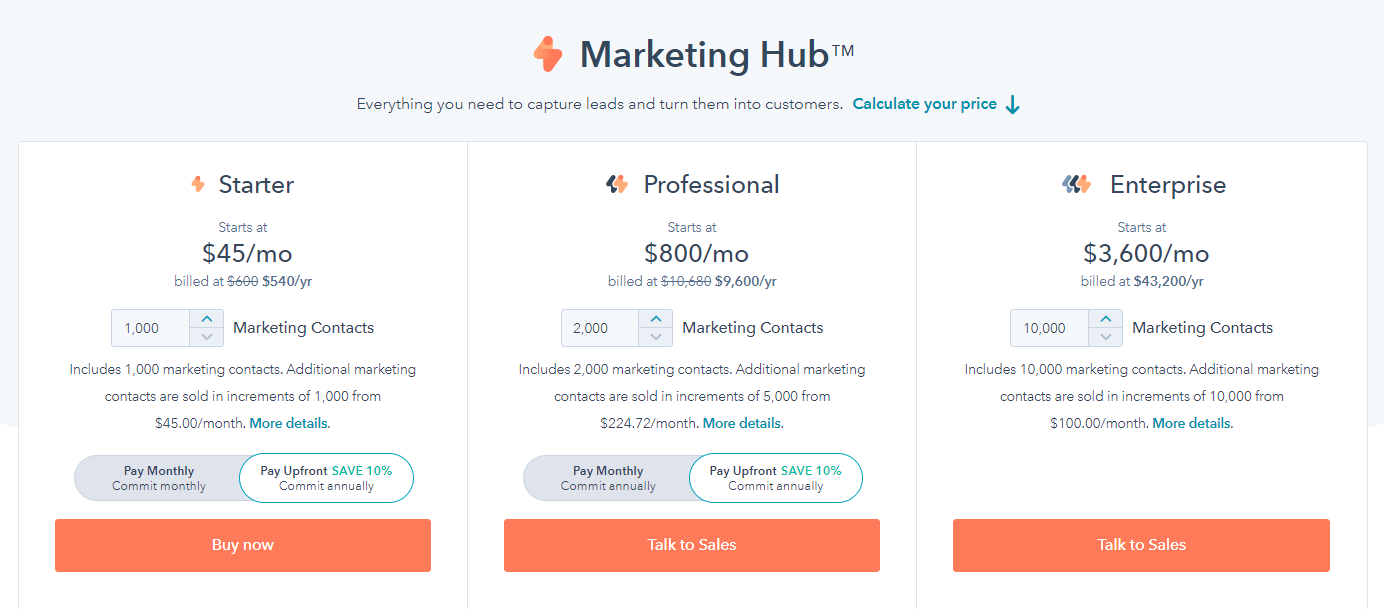
Strengths: Exceptional integration between marketing and sales, extensive free tier, comprehensive training resources.
3. ZoomInfo – B2B Database & Sales Intelligence

Best For: Enterprise sales teams needing comprehensive company and contact intelligence
ZoomInfo dominates the B2B data space with its massive database and intent data capabilities. While ZoomInfo dominates the enterprise space, many teams are exploring zoominfo alternatives that offer better value for smaller organizations.
Key Features of sales intelligence tools:
- 100+ million company profiles and 400+ million contacts
- Intent data showing buying signals
- Organizational charts and job change alerts
- Email and phone contact data
- Advanced search and filtering
Pricing: Custom enterprise pricing (typically $15,000+ annually)

Best Use Case: Large sales organizations with dedicated SDR teams and enterprise deal sizes justifying the investment.
4. LinkedIn Sales Navigator – Social Selling Platform
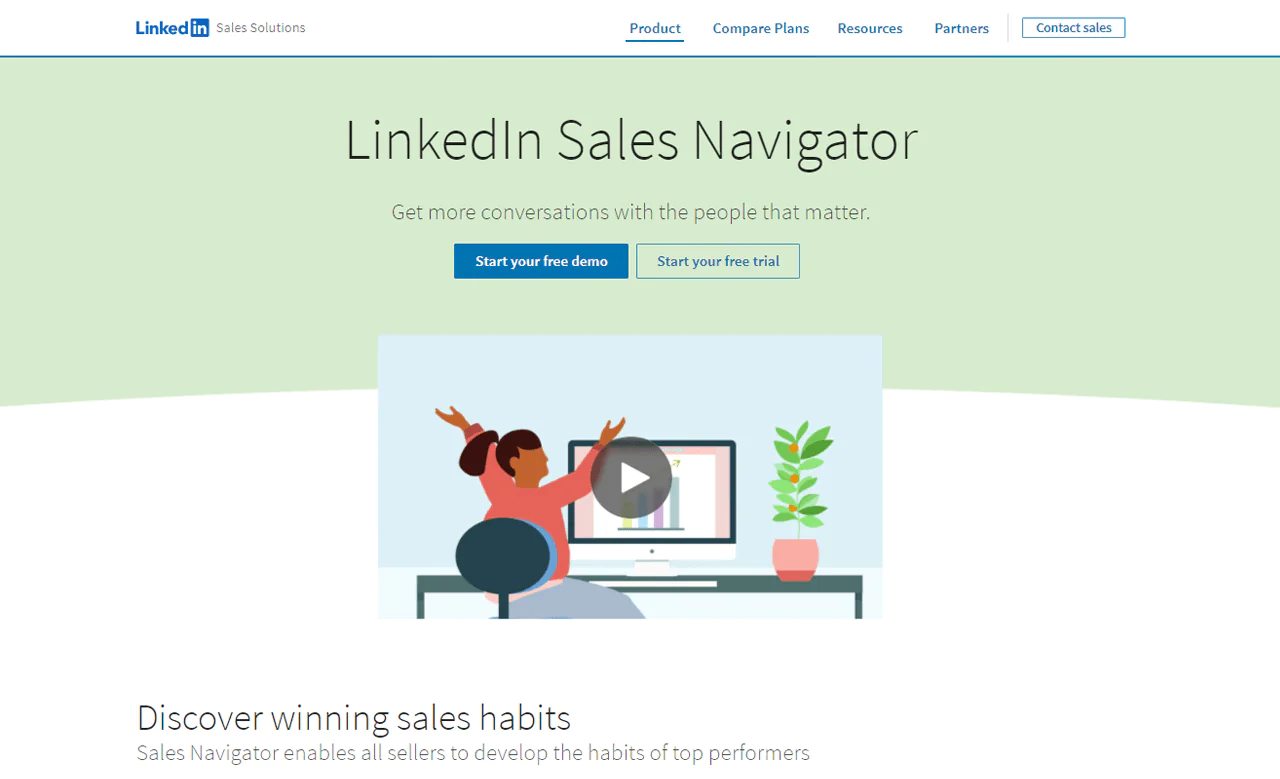
Best For: B2B professionals leveraging LinkedIn’s professional network
80% of B2B leads coming from social media originate on LinkedIn, and 89% of B2B marketers rely on LinkedIn for lead generation. Sales Navigator transforms LinkedIn from a networking site into a powerful prospecting engine.
Key Features of lead gen software:
- Advanced search with 40+ filters
- Lead and account recommendations
- InMail messaging to prospects outside your network
- Real-time insights on prospects and accounts
- CRM integration capabilities
Pricing:
- Core: $79.99/month per user
- Advanced: $134.99/month per user
- Advanced Plus: $169.99/month per user
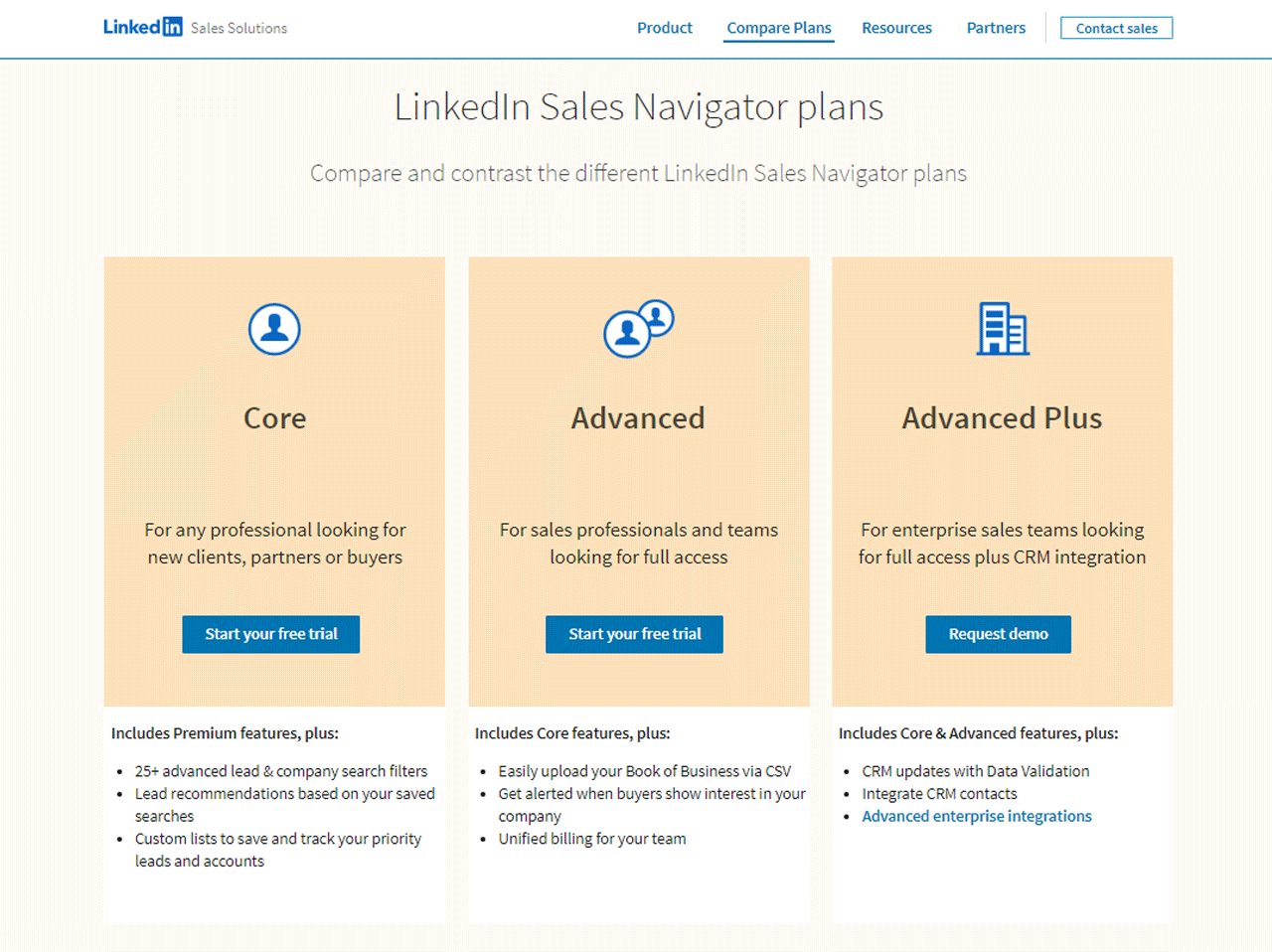
Why It Works: LinkedIn’s professional context makes cold outreach feel less intrusive and more relationship focused.
5. Apollo.io – Free & Paid B2B Lead Generation Tool
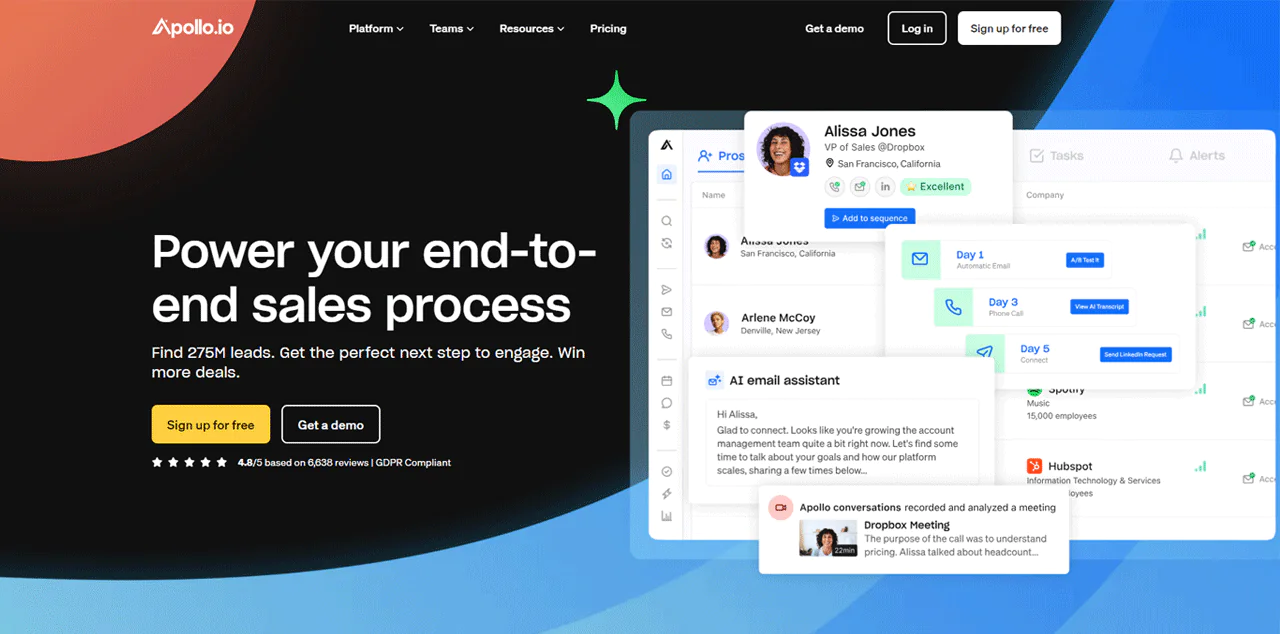
Best For: Teams wanting prospecting, engagement, and analytics in one platform
Apollo.io combines a massive B2B database with multi-channel outreach capabilities and detailed analytics. It’s particularly strong for teams that want to manage their entire outbound process in one tool.
Key Features of This B2B Lead Generation Tool:
- 275+ million contacts and 73+ million companies
- Email sequences and phone dialer
- Conversation intelligence and call recording
- Advanced analytics and reporting
- Chrome extension for prospecting
Pricing:
- Free: 50 credits per month
- Basic: $49/month per user
- Professional: $79/month per user
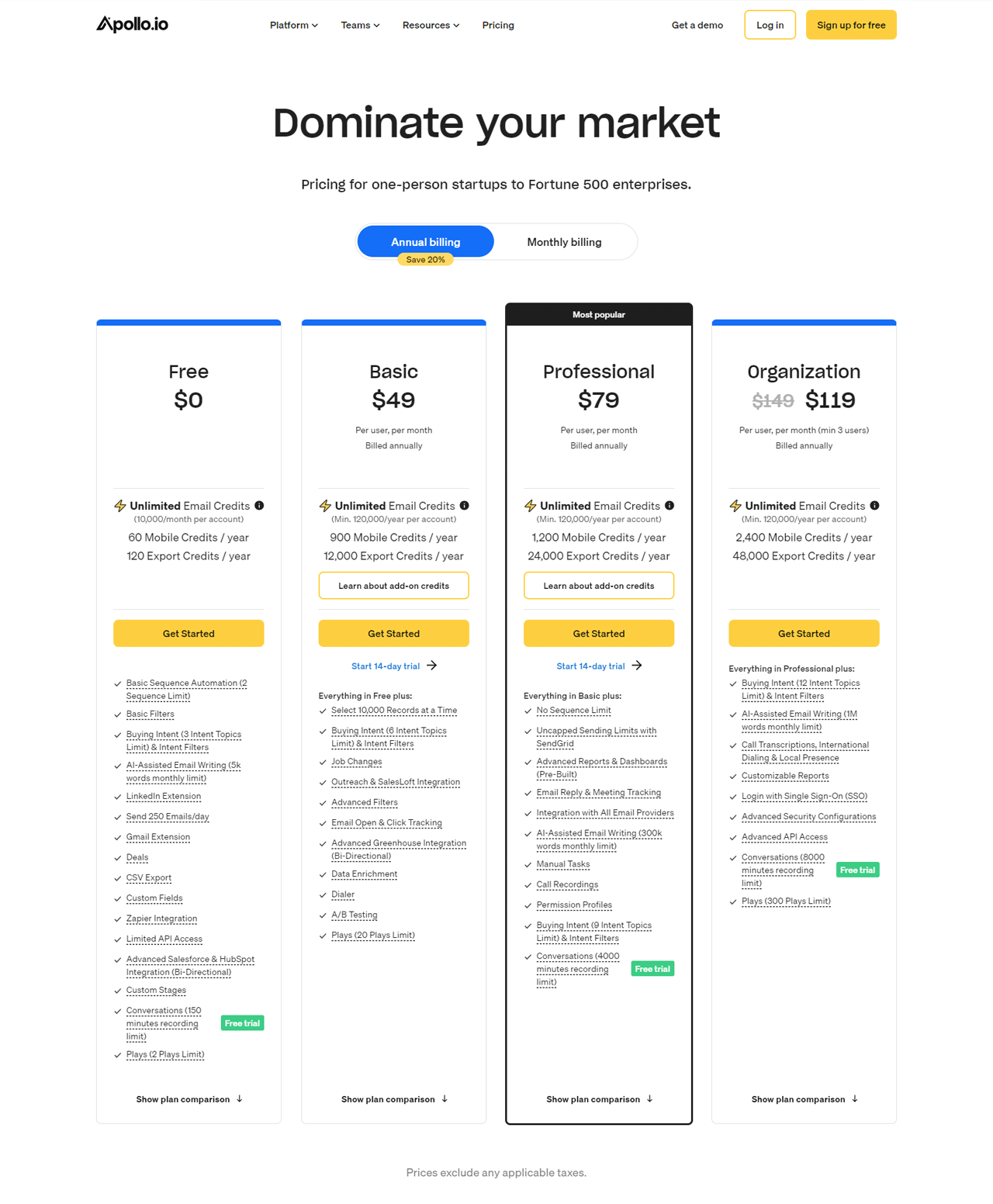
Standout Feature: The combination of data quality and engagement tools makes it a one-stop solution for many sales teams.
6. Leadfeeder – Website Visitor Identification

Best For: Identifying anonymous website visitors for follow-up
Leadfeeder (now part of Dealfront) reveals which companies visit your website, showing you warm leads you didn’t know existed. For inbound-focused companies, this intelligence transforms anonymous traffic into actionable prospects.
Key Features:
- Identifies companies visiting your website
- Shows pages visited and engagement patterns
- Integrates with Google Analytics
- Lead scoring and qualification
- CRM integration for automated follow-up
Pricing:
- Free: Up to 100 companies per month
- Premium: Starting at €79/month
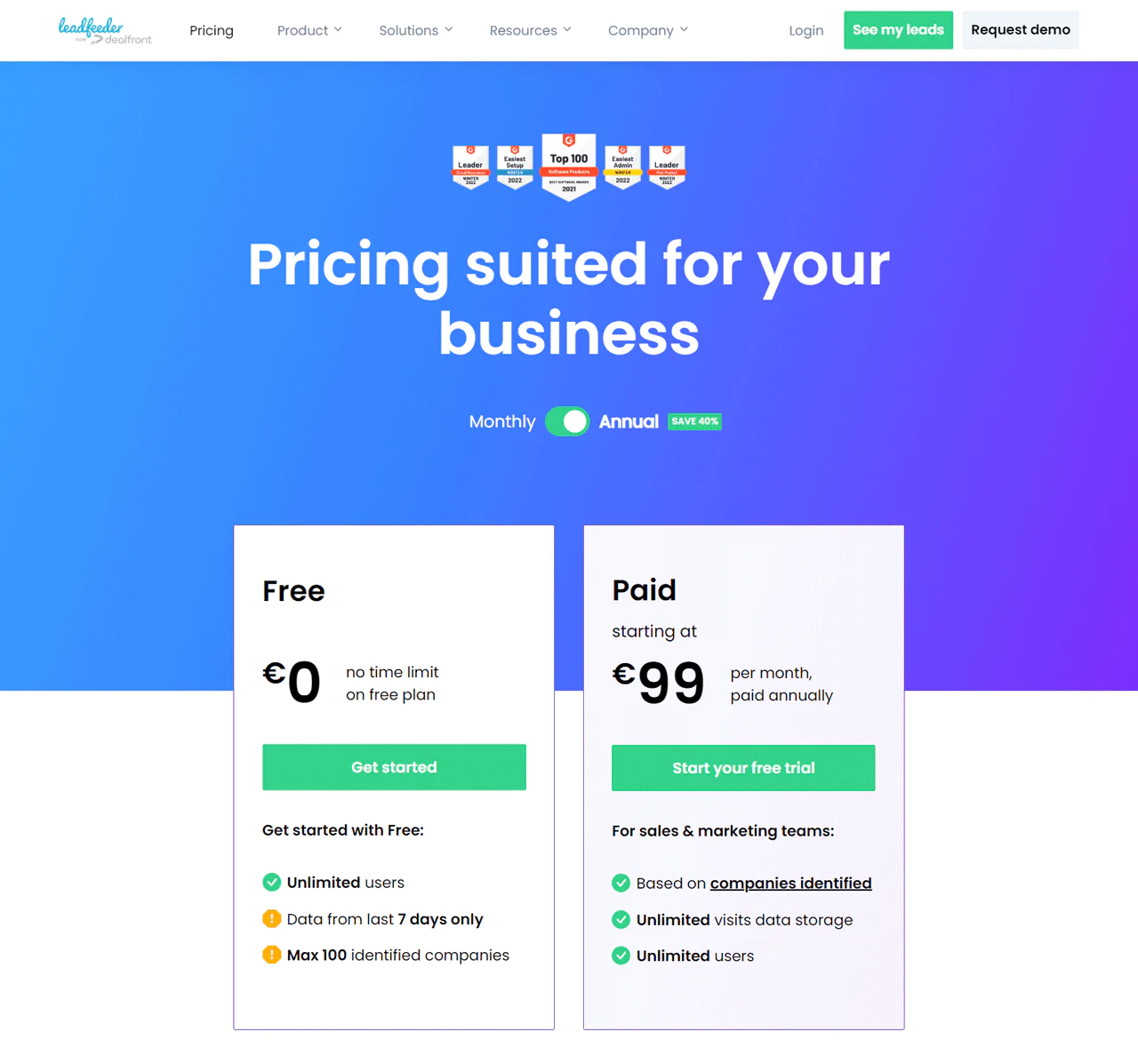
Game-Changer: Turns website analytics into active lead generation by identifying interested prospects before they fill out forms.
7. Outreach – Sales Engagement Platform

Best For: High-volume outbound sales teams needing sophisticated automation
Outreach pioneered the sales engagement platform category and remains the leader for teams running complex, multi-touch outbound campaigns at scale.
Key Features:
- Multi-channel sequences (email, phone, social, SMS)
- AI-powered send time optimization
- Conversation intelligence and call analytics
- Advanced reporting and coaching tools
- Extensive CRM integrations
Pricing: Custom enterprise pricing (typically $100+ per user/month)
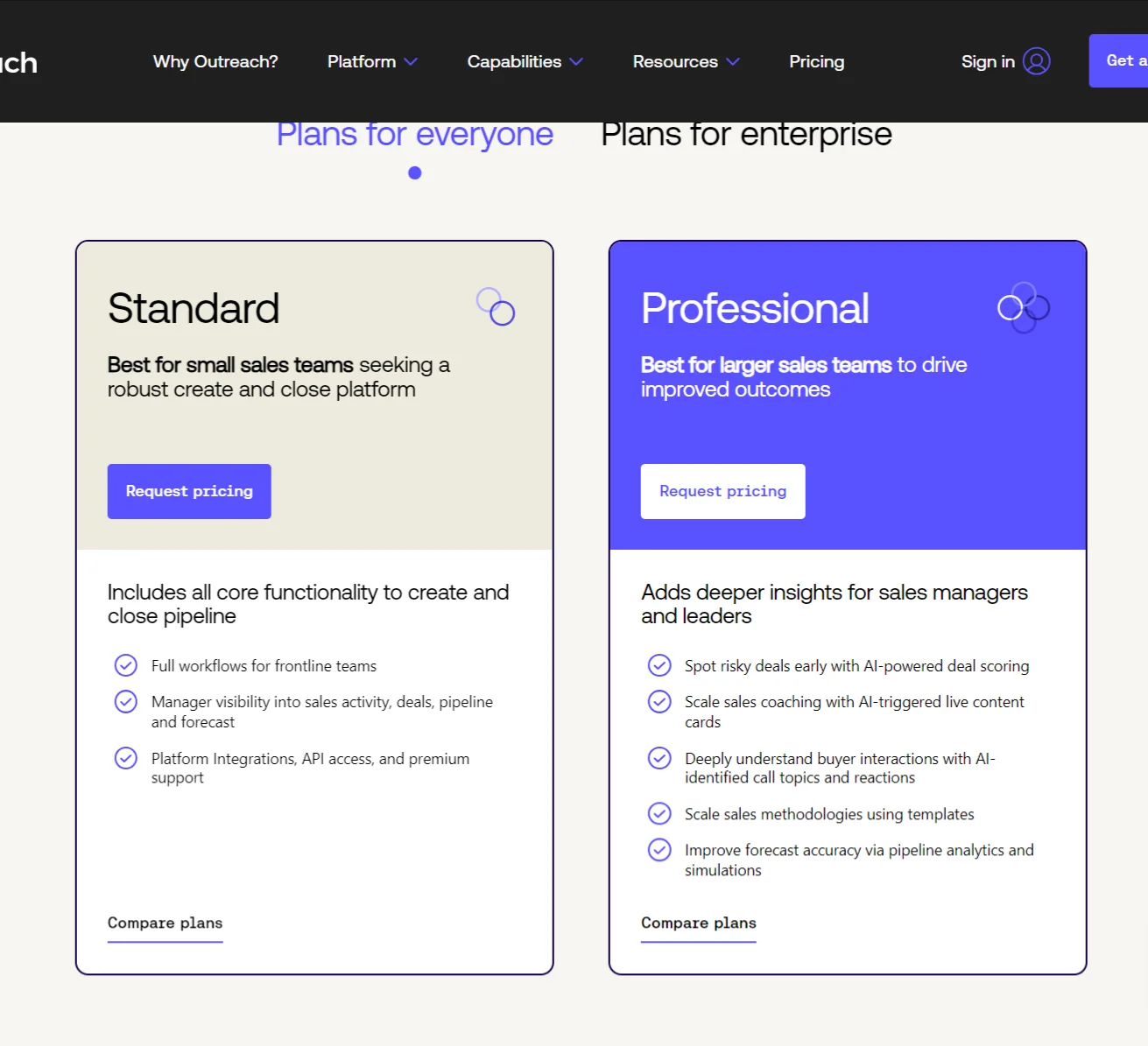
Enterprise Focus: Best suited for larger sales organizations with dedicated SDR/BDR teams and complex sales processes.
8. UpLead – B2B Contact Database & Verification
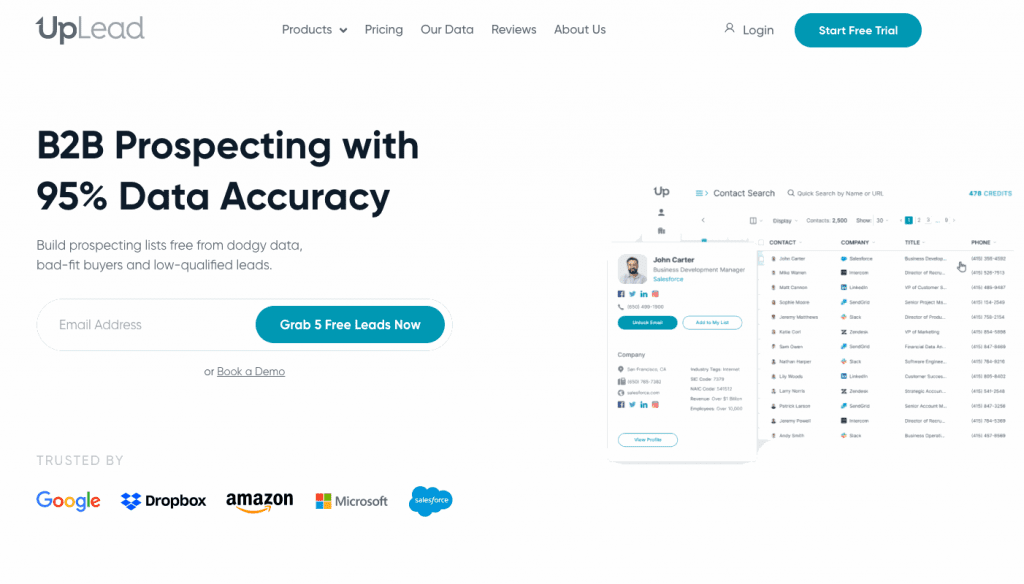
Best For: Accurate B2B contact data with real-time verification
UpLead differentiates itself with rigorous data verification processes, ensuring higher email deliverability and connect rates than many competitors.
Key Features:
- Real-time email verification (95%+ accuracy claimed)
- 54+ million companies and 135+ million contacts
- Advanced search filters and boolean search
- Chrome extension and CRM integrations
- Technographic and firmographic data
Pricing:
- Essentials: $99/month for 200 credits
- Plus: $199/month for 500 credits
- Professional: Custom pricing
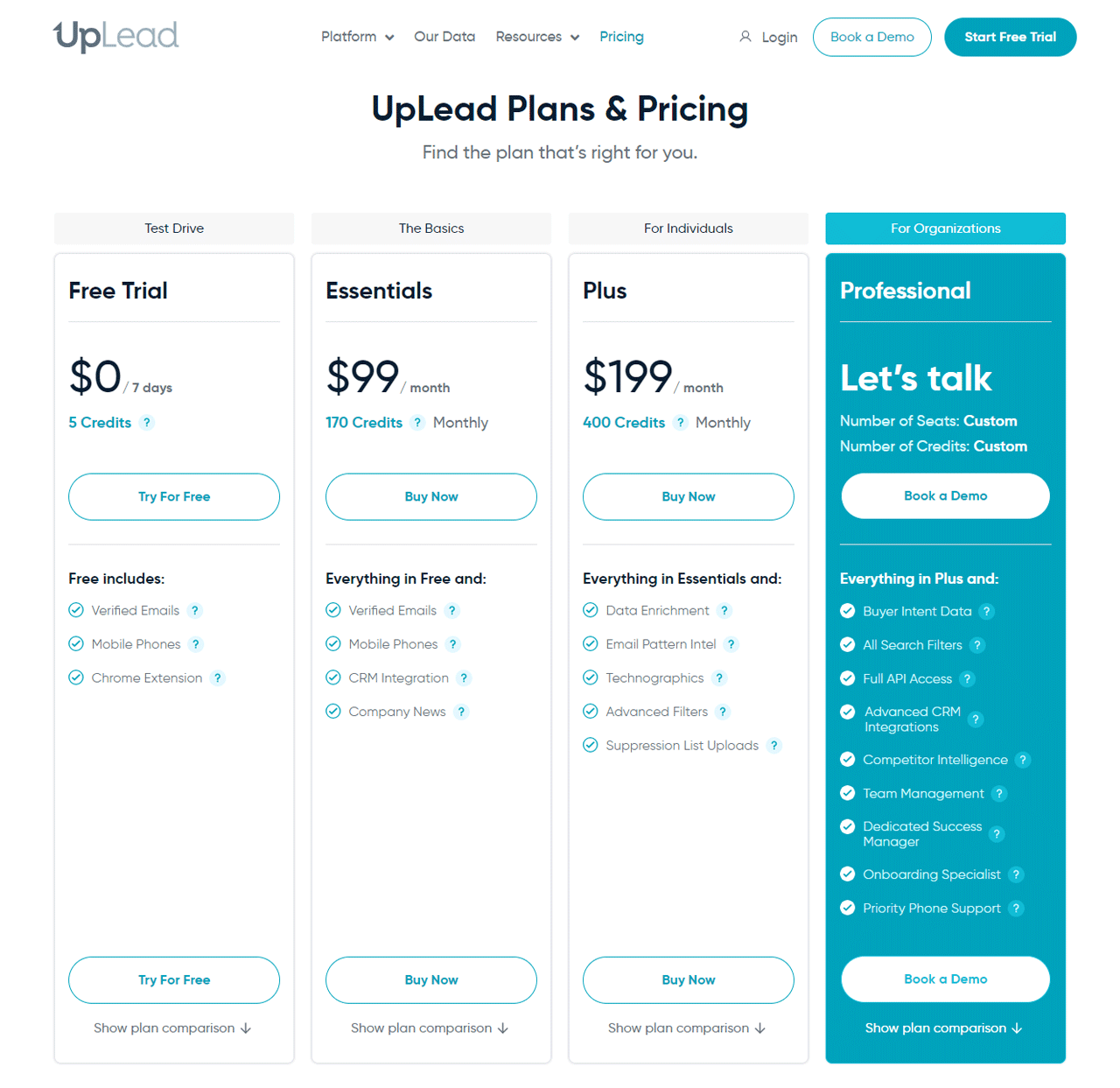
Value Proposition: Higher upfront cost justified by superior data accuracy and deliverability rates.
9. Mailchimp – Email Marketing Automation

Best For: Small to medium businesses building email marketing funnels
While known for email marketing, Mailchimp has evolved into a comprehensive marketing platform with strong lead generation capabilities, especially for SMBs.
Key Features:
- Email marketing automation and sequences
- Landing pages and signup forms
- Social media advertising management
- Customer journey mapping
- E-commerce integrations
Pricing:
- Free: Up to 500 contacts
- Essentials: $13/month for 500 contacts
- Standard: $20/month with advanced features

Sweet Spot: Perfect for businesses getting serious about email marketing without enterprise complexity.
10. Salesforce Sales Cloud – Enterprise CRM & Automation

Best For: Large organizations needing comprehensive sales process management
Salesforce remains the CRM gold standard, with extensive lead generation and management capabilities that scale to the largest enterprise needs.
Key Features:
- Comprehensive lead and opportunity management
- Advanced workflow automation
- AI-powered insights with Einstein
- Extensive AppExchange ecosystem
- Customizable dashboards and reporting
Pricing:
- Essentials: $25/month per user
- Professional: $80/month per user
- Enterprise: $165/month per user

Enterprise Strength: Unmatched customization and scalability for complex sales organizations.
11. OptinMonster – Conversion Optimization Platform

Best For: Converting website traffic into leads through forms and pop-ups
OptinMonster specializes in capturing leads from existing website traffic through intelligently designed forms, pop-ups, and conversion tools.
Key Features:
- Drag-and-drop campaign builder
- Exit-intent technology to capture abandoning visitors
- A/B testing for optimization
- Advanced targeting and personalization
- Integration with email marketing platforms
Pricing:
- Basic: $9/month
- Plus: $19/month
- Pro: $29/month

Focus Area: Maximizing lead capture from traffic you’re already generating.
12. Pipedrive – Visual CRM for Lead Management
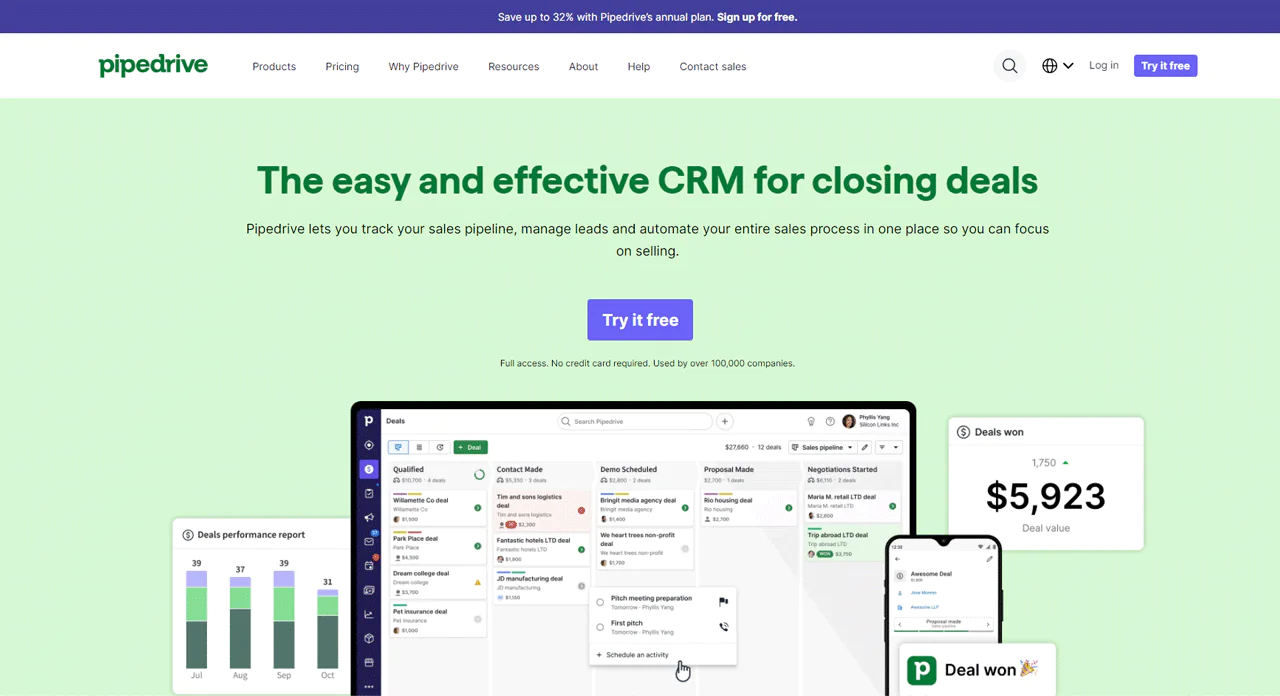
Best For: Small to medium sales teams wanting intuitive pipeline management
Pipedrive’s visual pipeline approach makes lead management intuitive for sales teams of all experience levels, with strong automation capabilities.
Key Features:
- Visual pipeline management
- Email integration and tracking
- Activity automation and reminders
- Mobile app for on-the-go management
- Reporting and forecasting tools
Pricing:
- Essential: $21.90/month per user
- Advanced: $37.90/month per user
- Professional: $59.90/month per user
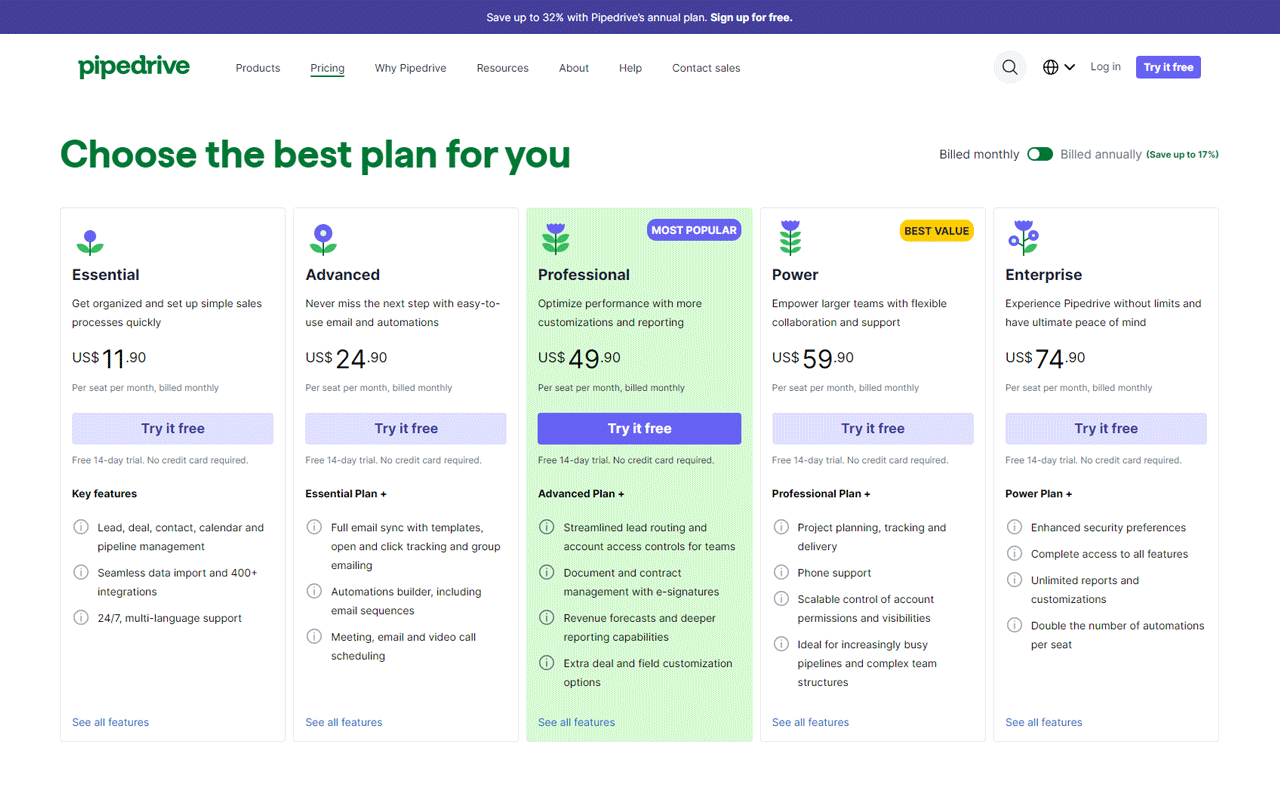
Simplicity Advantage: Easier adoption than complex enterprise CRMs while still providing powerful functionality.
13. Intercom – Conversational Marketing Platform

Best For: Engaging website visitors through chat and qualifying leads in real-time
Intercom transforms website chat from support tool to lead generation engine with AI-powered chatbots and qualification flows.
Key Features:
- AI-powered chatbots for lead qualification
- Live chat with team collaboration
- Customer messaging and support
- Lead routing and assignment
- Integration with CRM and marketing tools
Pricing:
- Starter: $39/month
- Pro: $99/month
- Premium: $139/month
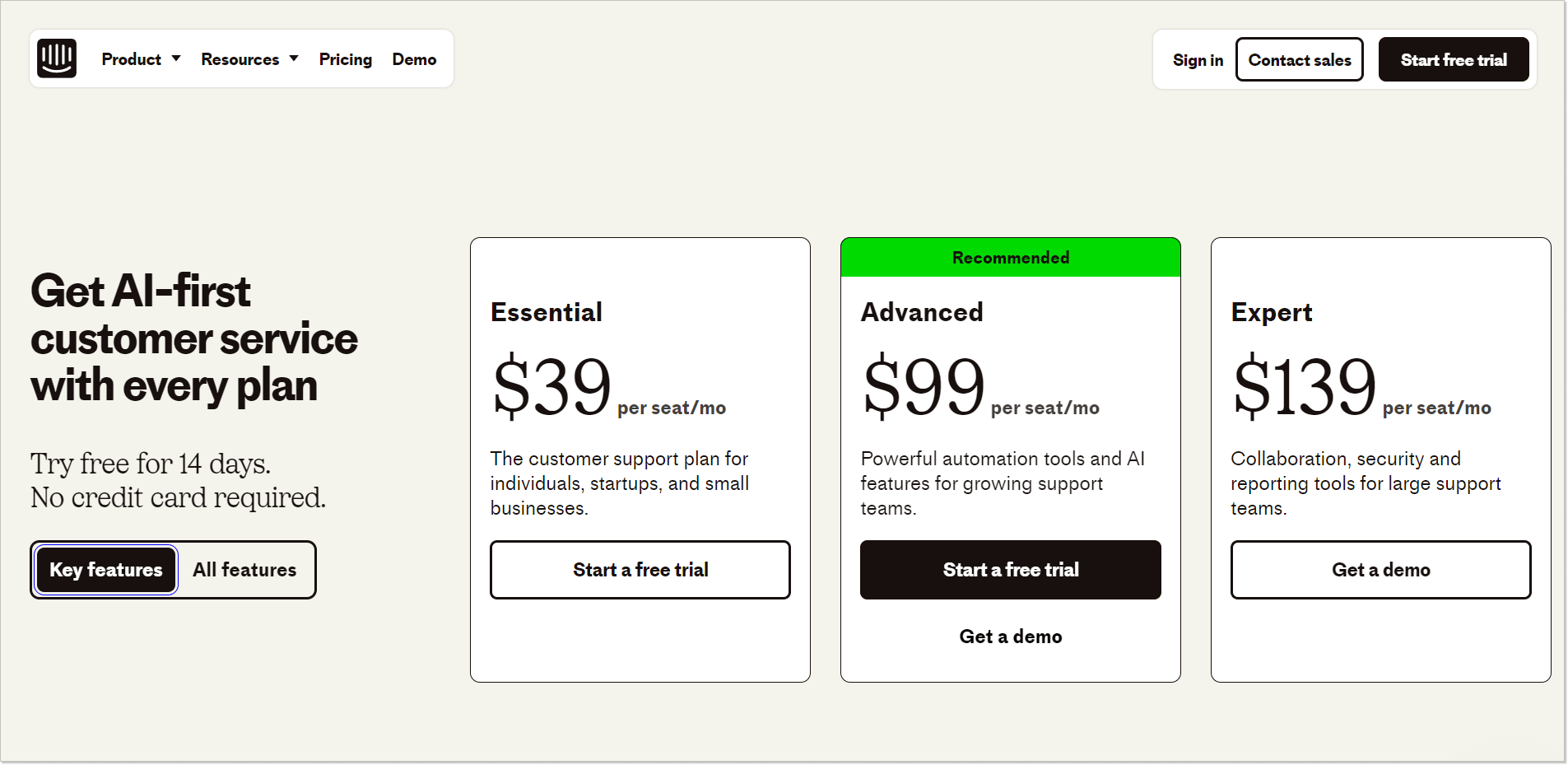
Conversion Focus: Particularly effective for SaaS and service businesses with complex products requiring explanation.
14. Hunter.io – Email Finding & Verification

Best For: Finding and verifying professional email addresses
Hunter.io excels at the specific task of finding professional email addresses, making it a valuable tool in any outbound sales toolkit.
Key Features:
- Email finder for any domain or person
- Email verification for deliverability
- Bulk email finding and verification
- Chrome extension for prospecting
- API for integration with other tools
Pricing:
Check Hunter.io pricing plans from Free to Growth and find the right option for your needs.
- Free: 25 searches per month
- Starter: $34/month for 500 searches
- Growth: $104/month for 5,000 searches

Specialized Focus: Best-in-class for the specific task of finding professional emails.
15. Cognism – Sales Intelligence & Contact Data

Best For: European businesses and teams needing GDPR-compliant B2B data
Cognism provides high-quality B2B data with strong compliance focus, particularly valuable for businesses operating in Europe or with strict data governance requirements.
Key Features:
- GDPR and CCPA compliant database
- Phone-verified mobile numbers
- Intent data and buyer insights
- Chrome extension and CRM integration
- Sales intelligence and prospecting tools
Pricing: Custom enterprise pricing
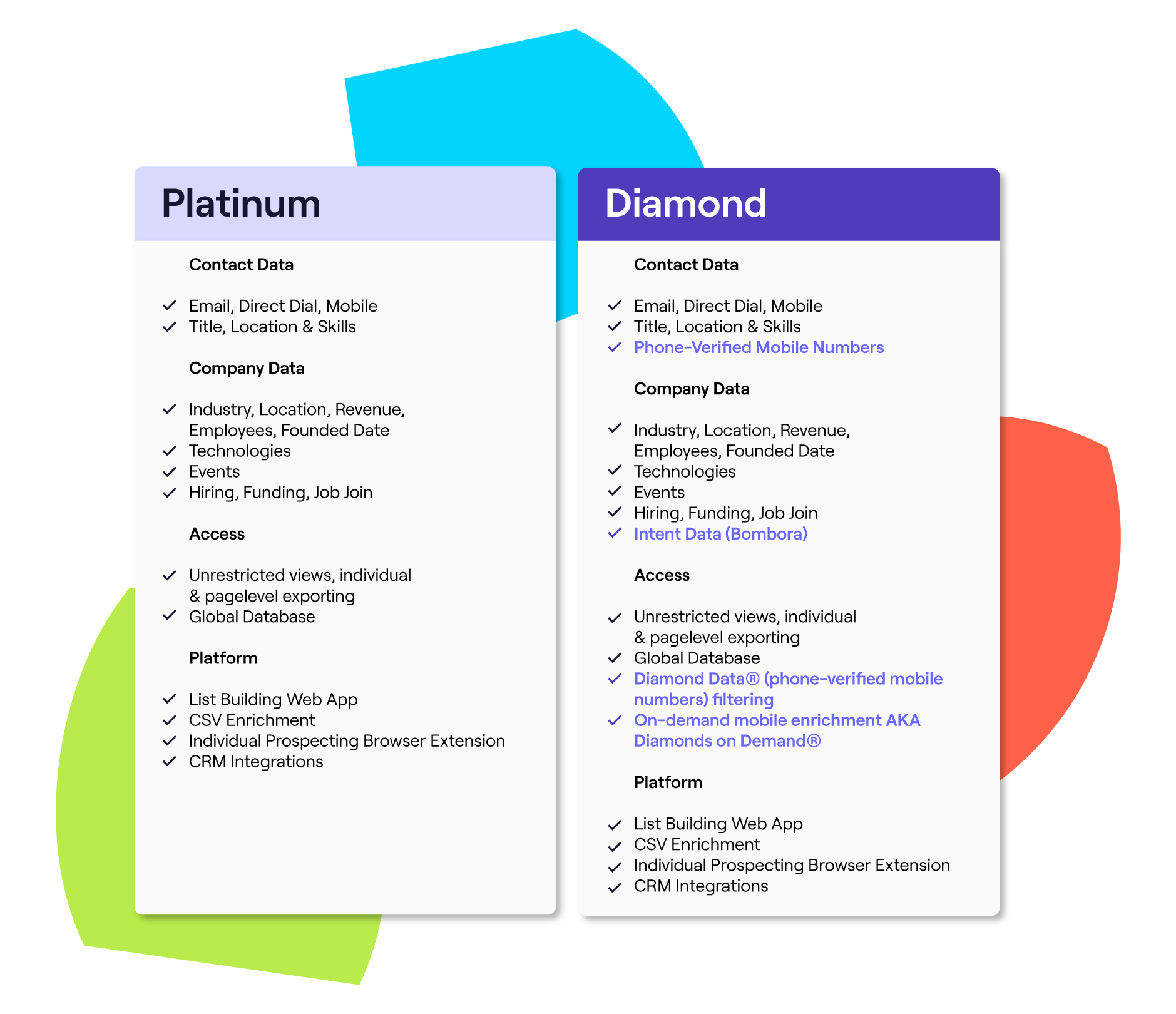
Compliance Strength: Superior data governance makes it ideal for regulated industries and European operations.
Free vs. Paid B2B Lead Generation Tools in 2025
The freemium model dominates b2b lead generation software but understanding where free ends and paid value begin is crucial for budget planning.
Top Free B2B Lead Generation Tools:
- Swordfish.ai: Best for Teams needing accurate personal emails, cell phones, and direct dials
- HubSpot CRM: Unlimited contacts, basic email marketing, and landing pages
- Mailchimp: Up to 500 contacts with basic automation
- Hunter.io: 25 email searches monthly
- Leadfeeder: 100 company identifications monthly
- Apollo.io: 50 credits monthly for prospecting
When to Upgrade to Paid Plans:
- Volume Limitations: Free plans cap contacts, searches, or emails
- Advanced Features: Automation, scoring, and analytics require paid tiers
- Integration Needs: Advanced CRM connections often premium-only
- Support Requirements: Priority support typically comes with paid plans
Pro Tip: Start with free versions to test fit, then upgrade the tools showing clear ROI in your specific use case.
How to Choose the Right B2B Lead Generation Software?
Selecting the optimal b2b lead generation tools requires aligning your specific business needs with tool capabilities. Here’s your decision framework:
1. Define Your Lead Generation Goals
- Volume vs. Quality: Are you looking to scale outreach volume or improve lead quality?
- Inbound vs. Outbound: Will you focus on converting existing traffic or proactive prospecting?
- Team Size: Do you need individual contributor tools or enterprise collaboration features?
- Industry Focus: Do you require specialized databases or compliance features?
2. Assess Your Current Tech Stack
- CRM Integration: Does your existing CRM integrate seamlessly?
- Data Flow: Can leads flow automatically between tools?
- User Adoption: Will your team actually use complex new tools?
- Budget Constraints: What’s your realistic monthly/annual software budget?
3. Start with Your Biggest Pain Point
- Low-Quality Leads: Focus on data providers with verification (Swordfish.ai, UpLead)
- Poor Email Deliverability: Prioritize verification tools (Hunter.io, Apollo.io)
- Manual Processes: Look for automation platforms (HubSpot, Outreach)
- Unknown Website Visitors: Consider visitor identification (Leadfeeder)
4. Plan for Scale
Choose tools that can grow with your business. A $50/month solution that requires replacement in 6 months costs more than a $200/month platform you can use for years.
Best Practices for 2025
The best b2b lead generation tools are only as effective as the strategies behind them. Here are the practices driving results in 2025:
Multi-Channel Approach
Single-channel lead generation campaigns are more expensive per lead than multi-channel alternatives. Successful teams coordinate email, LinkedIn, phone, and content touches for maximum impact.
Implementation: Use platforms like Outreach or Apollo.io to orchestrate multi-touch sequences across channels, maintaining consistent messaging while varying mediums.
AI-Powered Personalization
Companies that use AI report up to a 50% increase in lead generation and 47% higher conversion rates. AI enables personalization at scale that was impossible manually.
Practical Application: Tools like Cognism and ZoomInfo provide intent data that triggers personalized outreach when prospects show buying signals.
Intent Data Integration
Modern buyers research extensively before engaging with sales. Intent data reveals who’s actively looking for solutions like yours.
Strategy: Combine intent signals from tools like ZoomInfo with engagement data from your website and content to prioritize the warmest leads.
Account-Based Marketing (ABM) Focus
ABM “flips the funnel” – instead of casting a wide net, you zero in on specific companies and decision-makers. This customer-centric approach concentrates efforts on prospects most likely to convert.
Tool Alignment: Platforms like Cognism and LinkedIn Sales Navigator excel at account-based prospecting with detailed company insights and org charts.
Measuring B2B Lead Generation Tool ROI
More B2B marketing teams are struggling to prove ROI this year than last, with connecting marketing performance to business outcomes being a significant challenge for 85% of B2B marketers.
Key Metrics to Track:
- Cost Per Lead (CPL): Track across channels to identify most efficient sources
- Lead Quality Score: Measure lead progression through sales funnel
- Customer Acquisition Cost (CAC): Full-funnel cost from first touch to closed deal
- Lead Response Time: Speed of sales follow-up impacts conversion significantly
- Attribution Accuracy: Multi-touch attribution reveals true channel effectiveness
Tool-Specific ROI Measurements:
- Data Providers: Measure email deliverability improvement and connect rate increases
- CRM Platforms: Track pipeline velocity improvements and forecasting accuracy
- Automation Tools: Calculate time savings and increased outreach volume
- Analytics Platforms: Monitor lead score accuracy and conversion rate improvements.
The Common B2B contact data tool Mistakes to Avoid
Even the best b2b lead generation software can’t overcome strategic mistakes. Here are the biggest pitfalls we see:
1. Prioritizing Quantity Over Quality
The Problem: Outbound leads generated through tactics like cold calls, emails, and direct mail achieve just a 1.7% close rate on average.
The Solution: Focus on lead scoring, qualification, and targeting to improve quality metrics rather than just volume.
2. Ignoring Lead Nurturing
The Reality: Despite the fact that lead nurturing is so important, almost two-thirds of surveyed B2B businesses say they don’t have a defined lead nurturing process in place.
The Fix: Implement automated nurture sequences that provide value while moving prospects toward purchase decisions.
3. Poor Sales and Marketing Alignment
Common Issue: Marketing generates leads that sales considers unqualified, creating friction and wasted effort.
Resolution: Establish clear lead definition criteria and implement lead scoring systems that both teams agree on.
4. Insufficient Data Hygiene
The Cost: Poor data quality wastes sales time and reduces email deliverability over time.
Best Practice: Use real-time verification tools and maintain regular data cleaning processes.
Future Trends in B2B Lead Generation Software
Understanding where the industry is heading helps inform tool selection and strategy development:
AI and Machine Learning Integration
Expect deeper AI integration across all lead generation tools, from predictive lead scoring to automated content personalization.
Privacy-First Lead Generation
Privacy regulations continue to tighten worldwide, forcing changes in lead generation tactics. Tools emphasizing compliance and first-party data will gain advantage.
Video and Interactive Content
B2B buyers increasingly prefer video content and interactive experiences over traditional static content.
Real-Time Engagement Tools
Live chat, chatbots, and real-time notifications become standard for capturing and qualifying leads immediately.
Getting Started: Your 90-Day of Lead generation platform Implementation Plan
Day 1 to Day 30: Foundation Building
- Audit current lead generation processes and tools
- Select and implement core CRM platform
- Begin data hygiene and contact database cleanup
- Establish lead scoring criteria with sales team alignment
Days 31-60: Tool Integration and Testing
- Add specialized tools based on biggest pain points identified
- Set up automation workflows and nurture sequences
- Train team on new tools and processes
- Begin A/B testing different approaches
Days 61-90: Optimization and Scaling
- Analyze performance data and optimize based on results
- Scale successful campaigns and pause underperforming efforts
- Document best practices and create playbooks
- Plan for advanced features and additional tool integration.
The Final Thoughts: Building Your Sales intelligence platform Stack
The B2B lead generation landscape in 2025 rewards those who combine the right tools with smart strategy. With the B2B lead generation market projected to grow from USD 11.23 billion in 2025 to USD 29.51 billion by 2034, businesses that invest in quality lead generation infrastructure now will have significant competitive advantages.
Key Takeaways:
- Start with clear goals and current state assessment
- Choose tools that integrate well with your existing systems
- Focus on lead quality metrics, not just volume
- Implement multi-channel approaches for maximum effectiveness
- Plan for scale and changing business needs
The tools in this guide represent the best options available in 2025, from comprehensive platforms like HubSpot and Salesforce to specialized solutions like Swordfish.ai for contact data and Leadfeeder for visitor identification.
Ready to transform your lead generation software Start with a free trial of Swordfish.ai to experience the power of accurate, real-time contact data. Your sales team will thank you for the quality leads, and your bottom line will reflect the improved conversion rates.
Try Swordfish free and see the difference quality contact data makes in your lead generation efforts.
Frequently Asked Questions
Which platform is best for B2B lead generation?
LinkedIn is the best platform for B2B lead generation because it allows precise targeting of decision-makers and professionals.
Which is the best tool for lead generation?
Swordfish AI is one of the best tools for lead generation, offering CRM, email automation, and lead tracking in one system.
What is the best way to generate B2B leads?
The best way to generate B2B leads is by combining LinkedIn outreach, content marketing, cold emails, social selling, and email campaigns with reliable lead generation software.
Which campaign type is best for B2B lead generation?
Optimizing content for organic search drives the highest number of sales-qualified leads, making search marketing one of the most effective long-term B2B lead generation tactics, as 93% of buying journeys start with an online search.

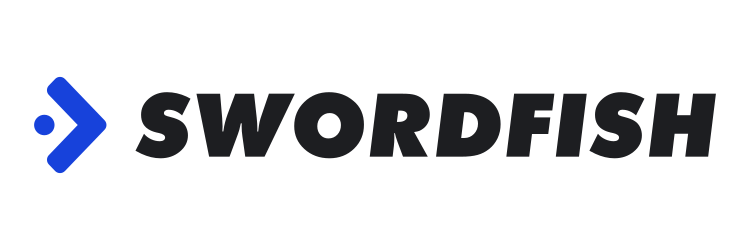
 View Products
View Products


